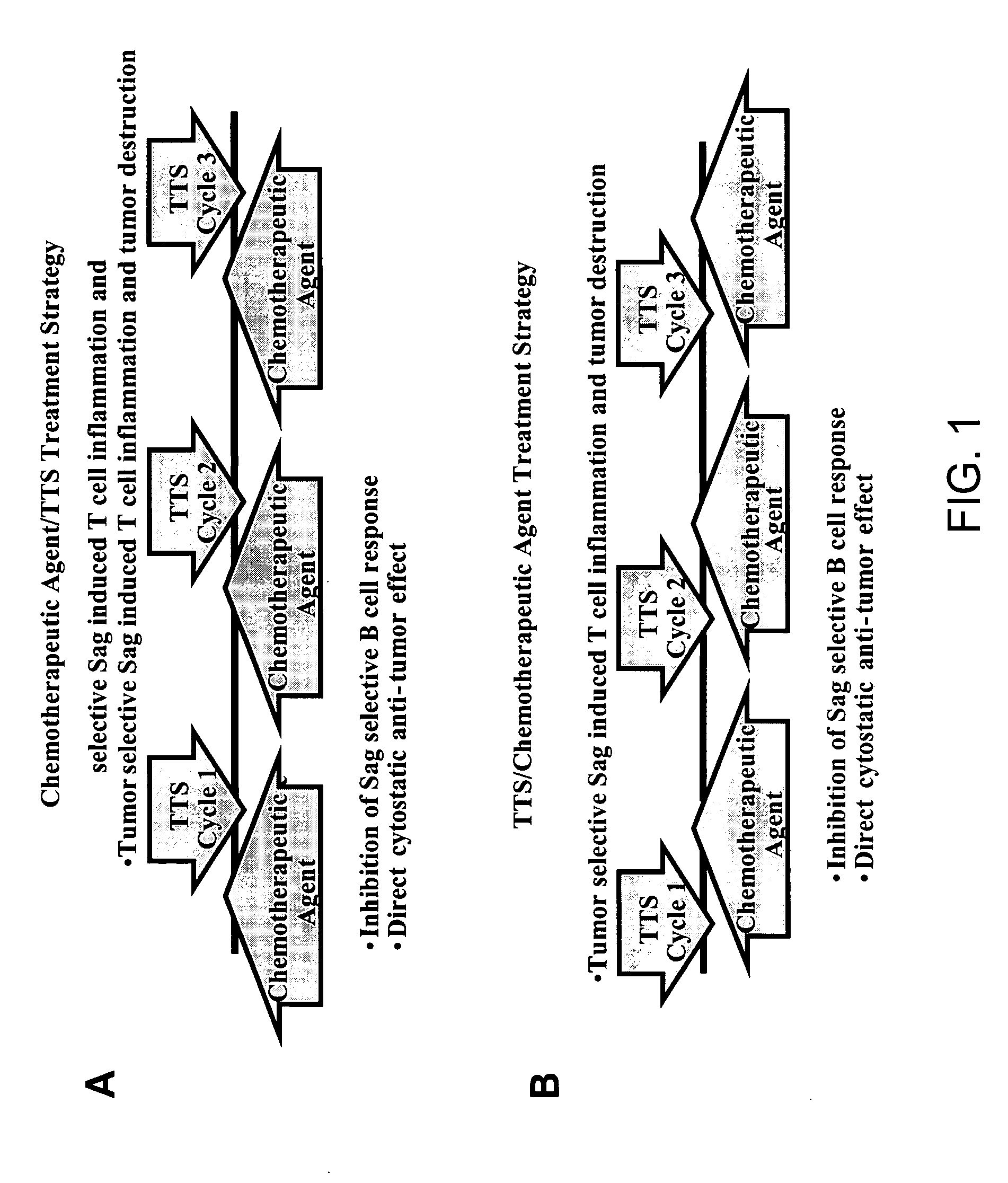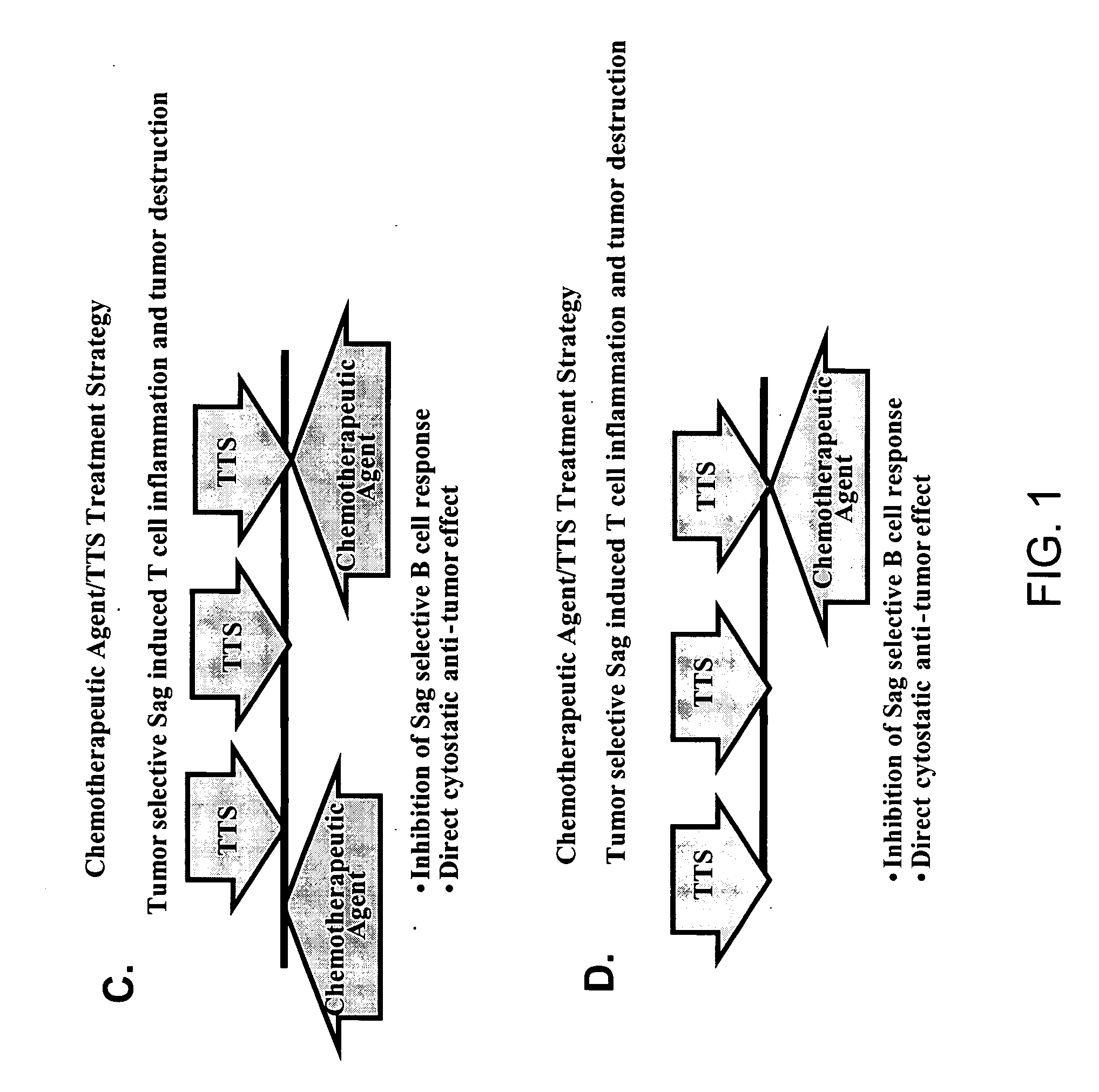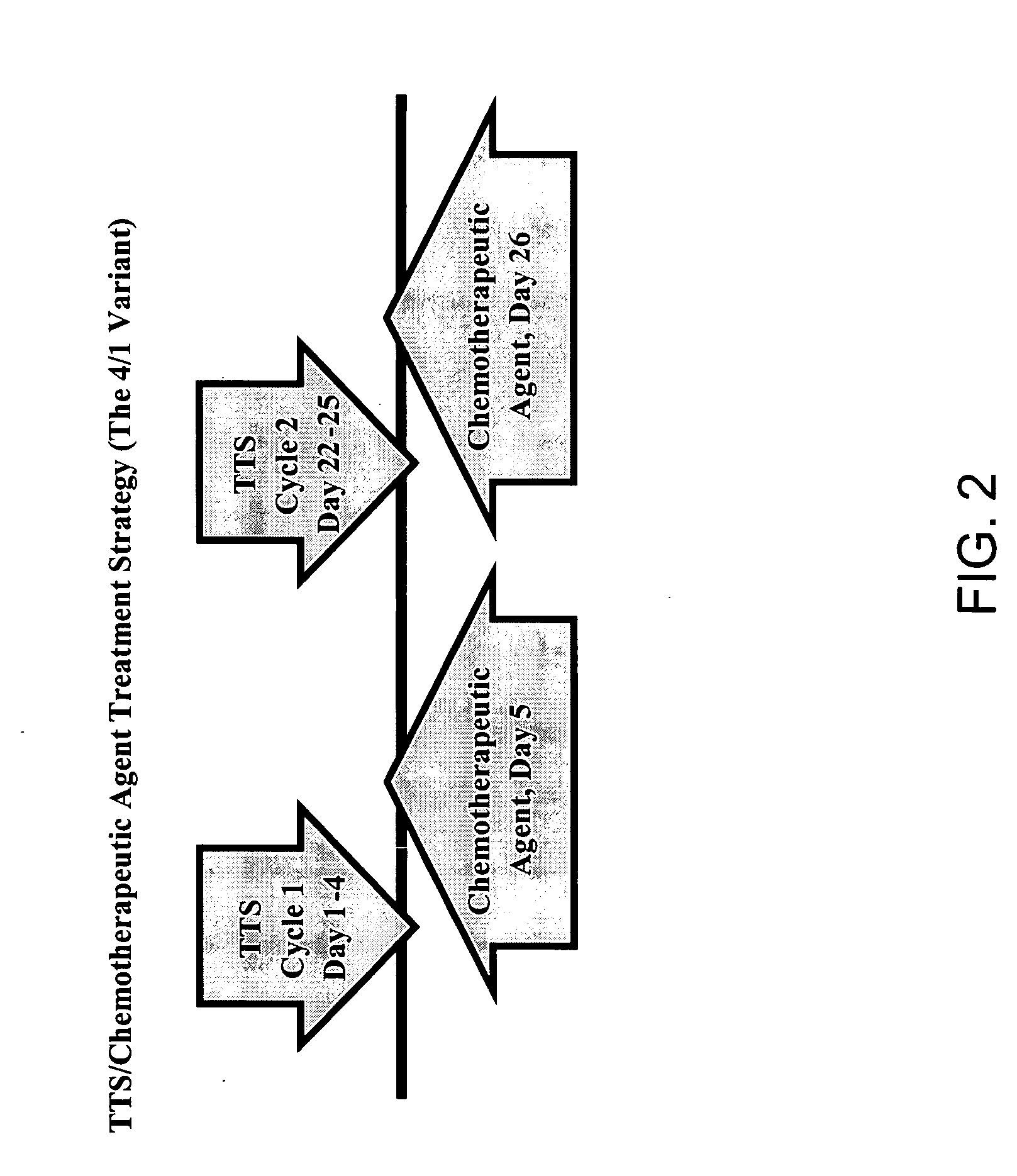Treatment of hyperproliferative disease with superantigens in combination with another anticancer agent
a technology of hyperproliferative disease and superantigens, applied in the field of mammals, can solve the problems of inducing cell arrest or cell death, unable to effectively treat malignant tumors, and extreme adverse side effects, and achieve the effect of reducing antibody production
- Summary
- Abstract
- Description
- Claims
- Application Information
AI Technical Summary
Benefits of technology
Problems solved by technology
Method used
Image
Examples
example 1
Tumor Targeted Superantigens
[0406] The fusion protein C215Fab-SEA (SEQ. ID. NO. 5) (sometimes referred to herein as “ABR-214720”), consisting of Staphylococcal Enterotoxin A genetically fused to the Fab moiety of an antibody (C215) recognizing an epitope of the human tumor associated antigen EpCAM / GA733-2, was expressed in E. coli (Dohlsten et. al., 1994) and purified as described by Forsberg et al., 1997. Other fusion proteins that may be used include 5T4Fab-SEA / E-120 (SEQ. ID. NO. 7) (sometimes referred to herein as “ABR-217620”), and 5T4Fab-SEAD227A (SEQ. ID. NO. 6), which are produced as described by Forsberg et al., 1997.
example 2
[0407] TTS-Chemotherapeutic (e.g., Gemcitabine, Docetaxel, Cisplatin) Agent Combination Therapy: In vitro Anti-Tumor
[0408] The effect of superantigen (TTS) treatment (5T4Fab-SEA / E-120) in combination with cytostatics on tumor growth was assessed in vitro.
Cell Lines and Media
[0409] The human cancer cell line Colo 205 was cultured in RPMI 1640+10% FBS (R10 medium). The cells were prepared by detachment with cell dissociation solution, washed with PBS and resuspended in R10 medium. Peripheral blood mononuclear cells (PBMC) were obtained from blood donors. The PBMC were isolated by density centrifugation on Ficoll-Paque. The cells were then cultured in R10 medium and stimulated with TTS to obtain effector T-cell lines.
Inhibition of Tumor Growth
[0410] Tumor growth inhibition by TTS in combination with gemcitabine (GEMZAR®), docetaxel (TAXOTERE®), and cisplatin was measured by a tumor cell proliferation assay. The proliferation assay measures DNA synthesis of the tumor cells by inc...
example 3
TTS-Chemotherapeutic Agent (e.g., Pemetrexed) Combination Therapy: In vitro Anti-Tumor
[0415] The effect of superantigen (TTS) treatment (5T4Fab-SEA / E-120) in combination with cytostatics on tumor growth was assessed in vitro.
Cell Lines and Media
[0416] The human cancer cell line Colo 205 was cultured in RPMI 1640+10% FBS (R10 medium). The cells were prepared by detachment with cell dissociation solution, washed with PBS and resuspended in R10 medium. Peripheral blood mononuclear cells (PBMC) were obtained from blood donors. The PBMC were isolated by density centrifugation on Ficoll-Paque. The cells were then cultured in R10 medium and stimulated with TTS to obtain effector T-cell lines.
Inhibition of Tumor Growth
[0417] Tumor growth inhibition by TTS and pemetrexed (ALIMTA®) and the combination was measured by a cell viability test. The cell viability test measured the amount of ATP in the tumor cells using a luciferase-based assay. Tumor cells were first incubated with TTS and ...
PUM
| Property | Measurement | Unit |
|---|---|---|
| Mass | aaaaa | aaaaa |
| Mass | aaaaa | aaaaa |
| Mass | aaaaa | aaaaa |
Abstract
Description
Claims
Application Information
 Login to View More
Login to View More - R&D
- Intellectual Property
- Life Sciences
- Materials
- Tech Scout
- Unparalleled Data Quality
- Higher Quality Content
- 60% Fewer Hallucinations
Browse by: Latest US Patents, China's latest patents, Technical Efficacy Thesaurus, Application Domain, Technology Topic, Popular Technical Reports.
© 2025 PatSnap. All rights reserved.Legal|Privacy policy|Modern Slavery Act Transparency Statement|Sitemap|About US| Contact US: help@patsnap.com



